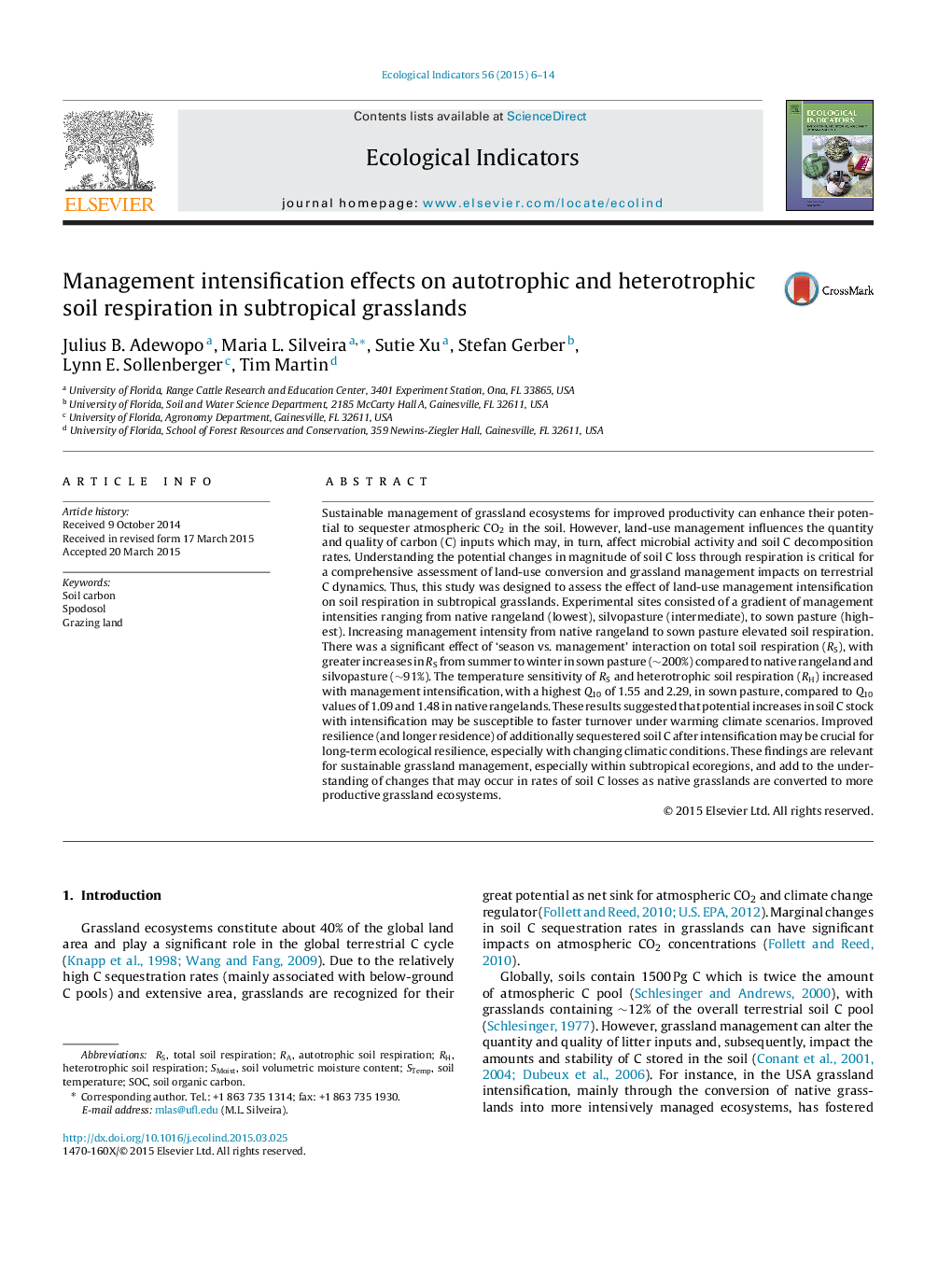| Article ID | Journal | Published Year | Pages | File Type |
|---|---|---|---|---|
| 6294318 | Ecological Indicators | 2015 | 9 Pages |
Abstract
Sustainable management of grassland ecosystems for improved productivity can enhance their potential to sequester atmospheric CO2 in the soil. However, land-use management influences the quantity and quality of carbon (C) inputs which may, in turn, affect microbial activity and soil C decomposition rates. Understanding the potential changes in magnitude of soil C loss through respiration is critical for a comprehensive assessment of land-use conversion and grassland management impacts on terrestrial C dynamics. Thus, this study was designed to assess the effect of land-use management intensification on soil respiration in subtropical grasslands. Experimental sites consisted of a gradient of management intensities ranging from native rangeland (lowest), silvopasture (intermediate), to sown pasture (highest). Increasing management intensity from native rangeland to sown pasture elevated soil respiration. There was a significant effect of 'season vs. management' interaction on total soil respiration (RS), with greater increases in RS from summer to winter in sown pasture (â¼200%) compared to native rangeland and silvopasture (â¼91%). The temperature sensitivity of RS and heterotrophic soil respiration (RH) increased with management intensification, with a highest Q10 of 1.55 and 2.29, in sown pasture, compared to Q10 values of 1.09 and 1.48 in native rangelands. These results suggested that potential increases in soil C stock with intensification may be susceptible to faster turnover under warming climate scenarios. Improved resilience (and longer residence) of additionally sequestered soil C after intensification may be crucial for long-term ecological resilience, especially with changing climatic conditions. These findings are relevant for sustainable grassland management, especially within subtropical ecoregions, and add to the understanding of changes that may occur in rates of soil C losses as native grasslands are converted to more productive grassland ecosystems.
Keywords
Related Topics
Life Sciences
Agricultural and Biological Sciences
Ecology, Evolution, Behavior and Systematics
Authors
Julius B. Adewopo, Maria L. Silveira, Sutie Xu, Stefan Gerber, Lynn E. Sollenberger, Tim Martin,
